-
 Technology Developed for Flexible, Foldable & Rechargeable Battery
Flexible, Foldable & Rechargeable Battery
The research group of professors Jang-Wook Choi & Jung-Yong Lee from the Graduate School of EEWS and Taek-Soo Kim from the Department of Mechanical Engineering at KAIST has developed technology for flexible and foldable batteries which are rechargeable using solar energy. The research result was published in the online issue of Nano Letters on November 5.
Trial versions of flexible and wearable electronics are being developed and introduced in the market such as Galaxy Gear, Apple’s i-Watch, and Google Glass. Research is being conducted to make the batteries softer and more wearable and to compete in the fast-growing market for flexible electronics.
This new technology is expected to be applied to the development of wearable computers as well as winter outdoor clothing since it is flexible and light. The research group expects that the new technology can be applied to current battery production lines without additional investment.
Professor Choi said, “It can be used as a core-source technology in the rechargeable battery industry in the future. Various wearable mobile electronic products can be developed through cooperation and collaboration within the industry.”
2013.11.21 View 14122
Technology Developed for Flexible, Foldable & Rechargeable Battery
Flexible, Foldable & Rechargeable Battery
The research group of professors Jang-Wook Choi & Jung-Yong Lee from the Graduate School of EEWS and Taek-Soo Kim from the Department of Mechanical Engineering at KAIST has developed technology for flexible and foldable batteries which are rechargeable using solar energy. The research result was published in the online issue of Nano Letters on November 5.
Trial versions of flexible and wearable electronics are being developed and introduced in the market such as Galaxy Gear, Apple’s i-Watch, and Google Glass. Research is being conducted to make the batteries softer and more wearable and to compete in the fast-growing market for flexible electronics.
This new technology is expected to be applied to the development of wearable computers as well as winter outdoor clothing since it is flexible and light. The research group expects that the new technology can be applied to current battery production lines without additional investment.
Professor Choi said, “It can be used as a core-source technology in the rechargeable battery industry in the future. Various wearable mobile electronic products can be developed through cooperation and collaboration within the industry.”
2013.11.21 View 14122 -
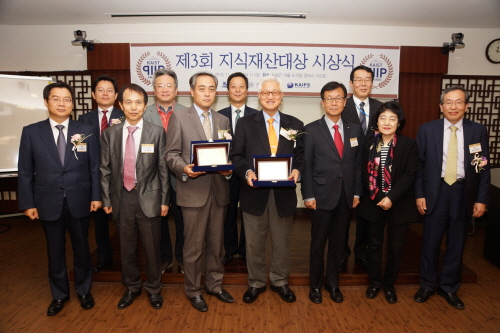 President of WIPA Sang-Hui Lee and SK Hynix Awarded the 2013 Intellectual Property Award
The ceremony for the 3rd Intellectual Property Award was held at the KAIST campus in Seoul on November 2nd. The award is given annually to Korean practitioners in intellectual property.
This year’s recipients were Sang-Hui Lee, the president of the World Intellectual Property Association of Korean Practitioners (WIPA) and the SK Hynix Patent Group which successfully defended a long-lasting claim against a patent specialist corporation.
The Intellectual Property Award (IP Award) is presented in recognition to Korean individuals or groups that contributed to national competitiveness through creation, application, or proceedings of intellectual property, as well as to building the foundation for the protection of patents, intellectual properties, and trademarks.
President Lee successfully hosted the Global Intellectual Property Summit in Seoul, which was held in October 2012. He was a crucial force behind the foundation of WIPA in May of this year and was also elected as the first president for the organization. Recently, President Lee has been at the forefront of job creation through the efficient use of intellectual property and the creative discovery of venture endeavors.
President Lee said, “The unique characteristic of a knowledge-based society lies in the collaboration network of people and knowledge property, startups based on intellectual property, and decentralized development.”
He added, “Just as Finland adopted a policy to build venture companies in utilization of intellectual properties and encouraged the decentralized growth throughout the nation after the collapse of Nokia, Korea must adapt to meet the changing requirements of the knowledge-intensive era.”
The SK Hynix Patent Group, another recipient for the Intellectual Property Award, won the lawsuit, dragged on for 13 years, against the Rambus, an American patent specialized corporation. The group initially lost the first trial in the federal court of California, but through relentless research and efforts, they won the case in the appeals court. The IP Award was co-hosted by the Korea Patent Attorney Association, the Korea Intellectual Property and Service Association, and KAIST.
2013.11.21 View 10670
President of WIPA Sang-Hui Lee and SK Hynix Awarded the 2013 Intellectual Property Award
The ceremony for the 3rd Intellectual Property Award was held at the KAIST campus in Seoul on November 2nd. The award is given annually to Korean practitioners in intellectual property.
This year’s recipients were Sang-Hui Lee, the president of the World Intellectual Property Association of Korean Practitioners (WIPA) and the SK Hynix Patent Group which successfully defended a long-lasting claim against a patent specialist corporation.
The Intellectual Property Award (IP Award) is presented in recognition to Korean individuals or groups that contributed to national competitiveness through creation, application, or proceedings of intellectual property, as well as to building the foundation for the protection of patents, intellectual properties, and trademarks.
President Lee successfully hosted the Global Intellectual Property Summit in Seoul, which was held in October 2012. He was a crucial force behind the foundation of WIPA in May of this year and was also elected as the first president for the organization. Recently, President Lee has been at the forefront of job creation through the efficient use of intellectual property and the creative discovery of venture endeavors.
President Lee said, “The unique characteristic of a knowledge-based society lies in the collaboration network of people and knowledge property, startups based on intellectual property, and decentralized development.”
He added, “Just as Finland adopted a policy to build venture companies in utilization of intellectual properties and encouraged the decentralized growth throughout the nation after the collapse of Nokia, Korea must adapt to meet the changing requirements of the knowledge-intensive era.”
The SK Hynix Patent Group, another recipient for the Intellectual Property Award, won the lawsuit, dragged on for 13 years, against the Rambus, an American patent specialized corporation. The group initially lost the first trial in the federal court of California, but through relentless research and efforts, they won the case in the appeals court. The IP Award was co-hosted by the Korea Patent Attorney Association, the Korea Intellectual Property and Service Association, and KAIST.
2013.11.21 View 10670 -
 One Day Idea Hackathon, GoGeeks 2013
GoGeeks Creation Group, founded by KAIST alumni, is hosting the GoGeeks One Day Idea Hackathon 2013 on November 23 at the Microsoft (MS) Building in Seoul. The contest was organized to support creative ideas proposed by college students and help them to be applied in real life.
The first GoGeeks contest was held last year by a group of KAIST undergraduate students, which was influenced by Duke University’s Elevator Pitch Competition, an entrepreneurial competition started in 1999.
Applications for the contest should be submitted on www.gogeeks.co.kr by November 20, and the first 30 groups registered will get to compete in the contest.
Each group will make one-minute presentations after six hours of planning on the theme of “Color Your Society.” Then five-minute presentations will follow by the top ten groups selected from the first stage. The top five groups will be each awarded the prize of 2 million Korean won.
The five selected teams will work on their proposed projects during the winter vacation with support from MS Korea and the Center for Science-based Entrepreneurship at KAIST.
Fundraising for the event is going on at http://tumblbug.com/gogeeks2013.
2013.11.21 View 8461
One Day Idea Hackathon, GoGeeks 2013
GoGeeks Creation Group, founded by KAIST alumni, is hosting the GoGeeks One Day Idea Hackathon 2013 on November 23 at the Microsoft (MS) Building in Seoul. The contest was organized to support creative ideas proposed by college students and help them to be applied in real life.
The first GoGeeks contest was held last year by a group of KAIST undergraduate students, which was influenced by Duke University’s Elevator Pitch Competition, an entrepreneurial competition started in 1999.
Applications for the contest should be submitted on www.gogeeks.co.kr by November 20, and the first 30 groups registered will get to compete in the contest.
Each group will make one-minute presentations after six hours of planning on the theme of “Color Your Society.” Then five-minute presentations will follow by the top ten groups selected from the first stage. The top five groups will be each awarded the prize of 2 million Korean won.
The five selected teams will work on their proposed projects during the winter vacation with support from MS Korea and the Center for Science-based Entrepreneurship at KAIST.
Fundraising for the event is going on at http://tumblbug.com/gogeeks2013.
2013.11.21 View 8461 -
 Exhibition of High Technology Held by the Graduate School of Culture Technology at KAIST
Screen X technology, displaying objects simutaneously on three screens
The Graduate School of Culture Technology at KAIST hosted the “2013 Demo Day” on the 1st of November.
The purpose of the Demo Day was to introduce recent research accomplishments on culture technology (CT) to the public and discuss the direction of the future trend of CT.The technologies introduced at the exhibition were: Screen X which simultaneously uses three screens, MagGetz which uses magnets for smart phone applications, Space Touch which connects the virtual reality with the real world, and Avatar that recognizes augmented objects using augmented reality.
Research papers entitled “Digital Art and Entertainment” (Professor Sung-Hee Lee), “Social Network” (Professor Mi-Young Cha), and “Interactive Media and Space” (Professor Ji-Hyun Lee) were presented as well. The Graduate School of Culture Technology was founded in 2005 to combine digital media and culture. Research is conducted largely in the fields of digital art & entertainment, ambient communication, and interactive media & space.
2013.11.20 View 7147
Exhibition of High Technology Held by the Graduate School of Culture Technology at KAIST
Screen X technology, displaying objects simutaneously on three screens
The Graduate School of Culture Technology at KAIST hosted the “2013 Demo Day” on the 1st of November.
The purpose of the Demo Day was to introduce recent research accomplishments on culture technology (CT) to the public and discuss the direction of the future trend of CT.The technologies introduced at the exhibition were: Screen X which simultaneously uses three screens, MagGetz which uses magnets for smart phone applications, Space Touch which connects the virtual reality with the real world, and Avatar that recognizes augmented objects using augmented reality.
Research papers entitled “Digital Art and Entertainment” (Professor Sung-Hee Lee), “Social Network” (Professor Mi-Young Cha), and “Interactive Media and Space” (Professor Ji-Hyun Lee) were presented as well. The Graduate School of Culture Technology was founded in 2005 to combine digital media and culture. Research is conducted largely in the fields of digital art & entertainment, ambient communication, and interactive media & space.
2013.11.20 View 7147 -
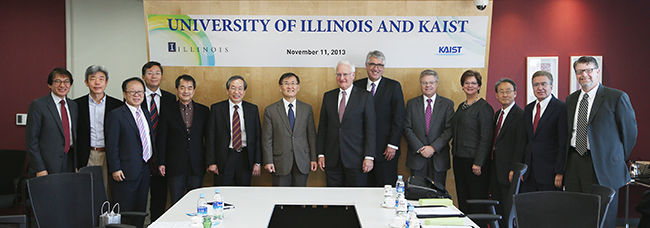 Visit by the President of the University of Illinois at Urbana-Champaign, US
A delegation from the University of Illinois at Urbana-Champaign (UIUC) in the United States visited KAIST on November 11, 2013.
The delegation consisted of senior administrators from the university, the president, vice president for research, dean of engineering college, dean of nursing college, and associate chancellor for corporate and international relations. The managing director of the State of Illinois Far East Office also joined the delegation.
They met with President Steve Kang, including vice presidents and deans of KAIST, and discussed forming a possible partnership between KAIST and UIUC.
Robert A. Easter, the president of UIUC, said, “Higher education institutions today are bearing a critical responsibility to increase the awareness, knowledge, skills, and values needed to create a sustainable future. I hope KAIST and the University of Illinois will join forces to lead innovation in higher education and to stay connected and relevant in a global marketplace.”
President Steve Kang responded, “There would be many opportunities for the two universities to collaborate and achieve global preeminence in such field as biotechnology, engineering, and convergence research.”
The University of Illinois, with three distinct campuses in Chicago, Springfield, and Urbana-Champaign, is one of the most prestigious universities in the world. The university has an annual operating budget of more than USD 5 billion, collectively enrolls more than 78,000 students, awards nearly 20,000 degrees each year, and has more than 665,000 alumni around the world.
2013.11.18 View 9162
Visit by the President of the University of Illinois at Urbana-Champaign, US
A delegation from the University of Illinois at Urbana-Champaign (UIUC) in the United States visited KAIST on November 11, 2013.
The delegation consisted of senior administrators from the university, the president, vice president for research, dean of engineering college, dean of nursing college, and associate chancellor for corporate and international relations. The managing director of the State of Illinois Far East Office also joined the delegation.
They met with President Steve Kang, including vice presidents and deans of KAIST, and discussed forming a possible partnership between KAIST and UIUC.
Robert A. Easter, the president of UIUC, said, “Higher education institutions today are bearing a critical responsibility to increase the awareness, knowledge, skills, and values needed to create a sustainable future. I hope KAIST and the University of Illinois will join forces to lead innovation in higher education and to stay connected and relevant in a global marketplace.”
President Steve Kang responded, “There would be many opportunities for the two universities to collaborate and achieve global preeminence in such field as biotechnology, engineering, and convergence research.”
The University of Illinois, with three distinct campuses in Chicago, Springfield, and Urbana-Champaign, is one of the most prestigious universities in the world. The university has an annual operating budget of more than USD 5 billion, collectively enrolls more than 78,000 students, awards nearly 20,000 degrees each year, and has more than 665,000 alumni around the world.
2013.11.18 View 9162 -
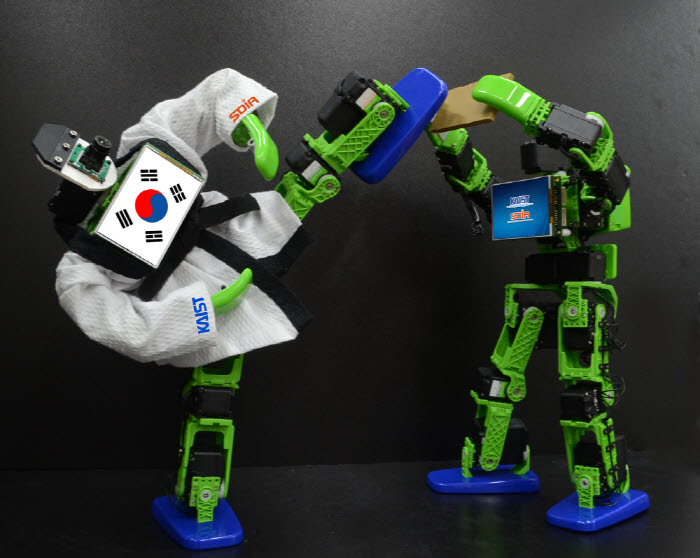 Final Results of the 2013 Intelligent SoC Robot War
KAIST hosted the 2013 Intelligent System on Chip (SoC) Robot War, the largest intelligent robot contest in Korea, from Oct. 24 to 27 at KINTEX in Ilsan, Korea.
Professor Hoi-Jun Yoo, from the Department of Electrical Engineering at KAIST, started the contest in 2003 to promote Taekwondo, a Korean martial art, and Korean semiconductor technology to the world.
The winning team was awarded an honorary certificate from Kookiwon, the world headquarters of Taekwondo.
Competitions were held in two different categories: Taekwon Robot and Huro Competition.
In the Taekwon Robot contest, intelligent robots loaded with cameras and semiconductor chips competed in Taekwondo skills.
In the Huro Competition, intelligent humanoid robots competed in detecting and passing huddles.
Approximately 550 participants from 107 groups applied for the 12th Intelligent SoC Robot War and 22 groups were selected for the final tournament. The best teams in each category received an award from the president and prime minister of the Republic of Korea, respectively.
Professor Yoo, the operating chair of the contest, said, “The contest was organized to introduce both technology and tradition by presenting robots with Taekwondo skills. The experiences from this contest could be the foundation for future robot technology and the growth engine for the next generation.”
Professor Yoo is a leading researcher in the field of object recognition chip, and his papers were often presented at the International Solid State Circuits Conference.Details of the contest can be found at http://www.socrobotwar.org.
2013.11.15 View 9869
Final Results of the 2013 Intelligent SoC Robot War
KAIST hosted the 2013 Intelligent System on Chip (SoC) Robot War, the largest intelligent robot contest in Korea, from Oct. 24 to 27 at KINTEX in Ilsan, Korea.
Professor Hoi-Jun Yoo, from the Department of Electrical Engineering at KAIST, started the contest in 2003 to promote Taekwondo, a Korean martial art, and Korean semiconductor technology to the world.
The winning team was awarded an honorary certificate from Kookiwon, the world headquarters of Taekwondo.
Competitions were held in two different categories: Taekwon Robot and Huro Competition.
In the Taekwon Robot contest, intelligent robots loaded with cameras and semiconductor chips competed in Taekwondo skills.
In the Huro Competition, intelligent humanoid robots competed in detecting and passing huddles.
Approximately 550 participants from 107 groups applied for the 12th Intelligent SoC Robot War and 22 groups were selected for the final tournament. The best teams in each category received an award from the president and prime minister of the Republic of Korea, respectively.
Professor Yoo, the operating chair of the contest, said, “The contest was organized to introduce both technology and tradition by presenting robots with Taekwondo skills. The experiences from this contest could be the foundation for future robot technology and the growth engine for the next generation.”
Professor Yoo is a leading researcher in the field of object recognition chip, and his papers were often presented at the International Solid State Circuits Conference.Details of the contest can be found at http://www.socrobotwar.org.
2013.11.15 View 9869 -
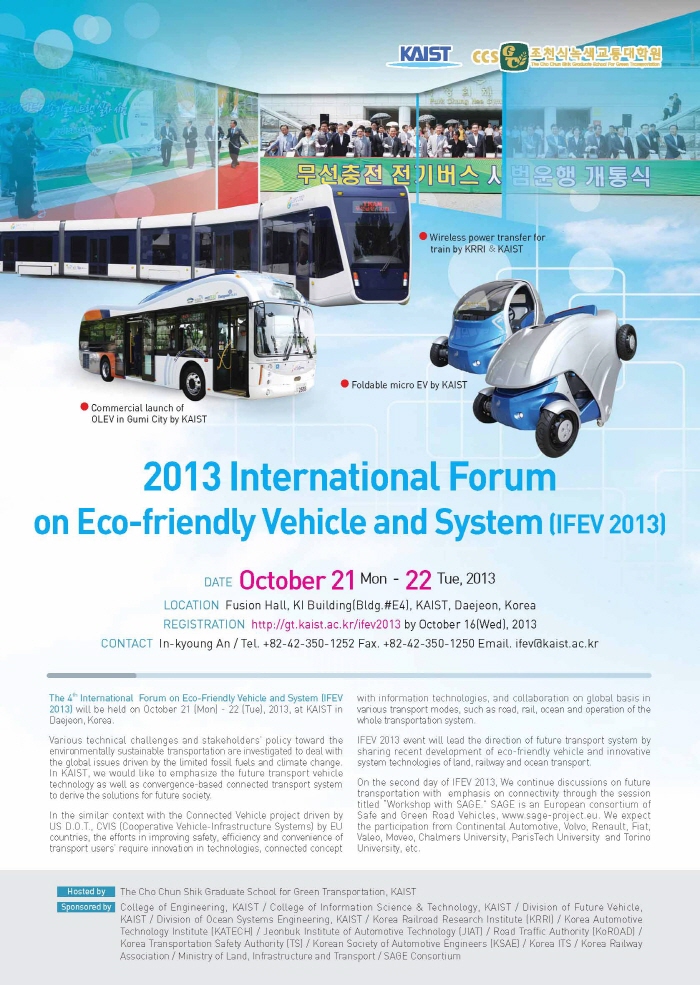 2013 International Forum on Eco-Friendly Vehicle and System
Leaders in transportation technology gathered at KAIST to discuss commercialization & standardization and to encourage the exchange of research progress, strategy, and future initiatives in transportation technology.
The Graduate School for Green Transportation at KAIST hosted the 2013 International Forum on Eco-friendly Vehicles and Systems (IFEV) in Fusion Hall of the KAIST Institute Building from October 21 to 22.
About 50 leaders in the field of future transportation from academic institutes and industries including Dr. Soon-Man Hong, President of Korea Railroad Research Institute (KRRI), Dr. Kwang-Hee Nam, Professor at Pohang University of Science and Technology (POSTECH), and Mr. Mike Schagrin, the Intelligent Transportation Systems Program Manager of the US Department of Transportation (retired) participated in the 4th annual IFEV.
The commercialization & standardization session and a technical session were followed by the plenary meeting of the forum.
Dr. Hong, the keynote speaker, introduced the High Capacity Double Deck High Speed Train, Near Surface Subway System, and Urban Railway System with Wireless Power Transfer Technology under the title “Korea’s Policy and Technology Initiative for Enhancing Green Transport Systems.”
Dr. Kwang-Hee Nam presented “Electric Vehicle Trends & the POSTECH E-Car Research Center Power Train Design,” followed by Mr. Mike Schagrin who spoke about “Going Green with Connected Automation.”
Dr. Omer C. Onar from the Oak Ridge National Laboratory (ORNL) shared recent research on “ORNL Development in Stationary and Dynamic Wireless Charging.”
In the commercialization session, Faical Turki of Vahle, Germany, presented “Wireless Inductive Battery Chargers,” and Professor Kazuyuki Ouchi from Tokyo University presented “Wind Challenger, the Next Generation Hybrid Vessels.”
In the technical session, presentations and discussions were performed on future ground vehicles and railroad technology, intelligent transportation systems and strategy, and policy on eco-friendly vehicle technology, including Professor In-Soo Suh of the Graduate School for Green Transportation at KAIST who presented on “Armadillo-T: 4WD Micro Electric EV with a Foldable Body Concept.”
On the second day of IFEV 2013, representatives of the European Union’s Safe and Green Road Vehicles (SAGE) consortium discussed connectivity in road transportation as a means of improving safety, efficiency and convenience in future safe and green vehicles with collaboration from Korean transportation organizations such as the Korea Transport Institute and Electronics and Telecommunications Research Institute.
Professor Suh, who organized the forum, said, “This forum will serve as an excellent opportunity to discuss and share R&BD progress in the green transportation field. “Details can be found at http://gt.kaist.ac.kr/ifev2013/.
2013.11.15 View 15019
2013 International Forum on Eco-Friendly Vehicle and System
Leaders in transportation technology gathered at KAIST to discuss commercialization & standardization and to encourage the exchange of research progress, strategy, and future initiatives in transportation technology.
The Graduate School for Green Transportation at KAIST hosted the 2013 International Forum on Eco-friendly Vehicles and Systems (IFEV) in Fusion Hall of the KAIST Institute Building from October 21 to 22.
About 50 leaders in the field of future transportation from academic institutes and industries including Dr. Soon-Man Hong, President of Korea Railroad Research Institute (KRRI), Dr. Kwang-Hee Nam, Professor at Pohang University of Science and Technology (POSTECH), and Mr. Mike Schagrin, the Intelligent Transportation Systems Program Manager of the US Department of Transportation (retired) participated in the 4th annual IFEV.
The commercialization & standardization session and a technical session were followed by the plenary meeting of the forum.
Dr. Hong, the keynote speaker, introduced the High Capacity Double Deck High Speed Train, Near Surface Subway System, and Urban Railway System with Wireless Power Transfer Technology under the title “Korea’s Policy and Technology Initiative for Enhancing Green Transport Systems.”
Dr. Kwang-Hee Nam presented “Electric Vehicle Trends & the POSTECH E-Car Research Center Power Train Design,” followed by Mr. Mike Schagrin who spoke about “Going Green with Connected Automation.”
Dr. Omer C. Onar from the Oak Ridge National Laboratory (ORNL) shared recent research on “ORNL Development in Stationary and Dynamic Wireless Charging.”
In the commercialization session, Faical Turki of Vahle, Germany, presented “Wireless Inductive Battery Chargers,” and Professor Kazuyuki Ouchi from Tokyo University presented “Wind Challenger, the Next Generation Hybrid Vessels.”
In the technical session, presentations and discussions were performed on future ground vehicles and railroad technology, intelligent transportation systems and strategy, and policy on eco-friendly vehicle technology, including Professor In-Soo Suh of the Graduate School for Green Transportation at KAIST who presented on “Armadillo-T: 4WD Micro Electric EV with a Foldable Body Concept.”
On the second day of IFEV 2013, representatives of the European Union’s Safe and Green Road Vehicles (SAGE) consortium discussed connectivity in road transportation as a means of improving safety, efficiency and convenience in future safe and green vehicles with collaboration from Korean transportation organizations such as the Korea Transport Institute and Electronics and Telecommunications Research Institute.
Professor Suh, who organized the forum, said, “This forum will serve as an excellent opportunity to discuss and share R&BD progress in the green transportation field. “Details can be found at http://gt.kaist.ac.kr/ifev2013/.
2013.11.15 View 15019 -
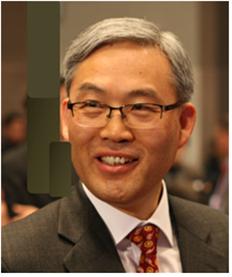 Professor Chun-Taek Rim Appointed as Associate Editor for IEEE TPEL
Professor Chun-Taek Rim of the nuclear and quantum engineering at KAIST was appointed as an associate editor of the Institute of Electrical and Electronics Engineers (IEEE) Transactions on Power Electronics (TPEL), an eminent academic journal bio-monthly published in the field of power electronics.The journal has a high impact factor (4.08), a measure reflecting the average number of citations to recent articles published in an academic journal, which ranks as the 6th the most influential journal among the 100 journals published by IEEE.Professor Rim was also appointed to an associate editor for IEEE Journal of Emerging and Selected Topics in Power Electronics in September in recognition of his expertise in wireless power and electric vehicles.
2013.11.15 View 12786
Professor Chun-Taek Rim Appointed as Associate Editor for IEEE TPEL
Professor Chun-Taek Rim of the nuclear and quantum engineering at KAIST was appointed as an associate editor of the Institute of Electrical and Electronics Engineers (IEEE) Transactions on Power Electronics (TPEL), an eminent academic journal bio-monthly published in the field of power electronics.The journal has a high impact factor (4.08), a measure reflecting the average number of citations to recent articles published in an academic journal, which ranks as the 6th the most influential journal among the 100 journals published by IEEE.Professor Rim was also appointed to an associate editor for IEEE Journal of Emerging and Selected Topics in Power Electronics in September in recognition of his expertise in wireless power and electric vehicles.
2013.11.15 View 12786 -
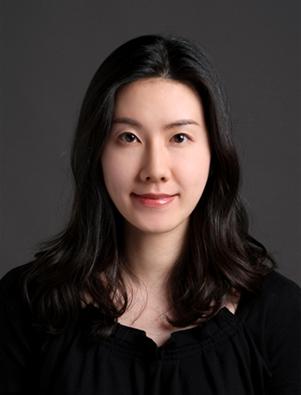 Professor Ji-Yun Lee, Received FAA Recognition Award
Professor Ji-Yun Lee, from the Department of Aerospace Engineering at KAIST, received the US Federal Aviation Administration (FAA) Recognition Award for her Ground-Based Augmentation System (GBAS) and her contribution to the development of satellite navigation technology.
GBAS contributes to the safety of aircraft navigation by providing flawless information with real-time location accuracy within one meter.
Professor Lee developed the monitoring software to improve the safety of GBAS users in her paper published in the International Journal of Radio Science in July of 2012.
The software will be distributed and used by many organizations including Eurocontrol following verification from the FAA technical center. It is expected to be standardized after discussions among international organizations.Professor Lee said, “As satellite navigation is applied to the infrastructure of air, marine, and ground transportation, as well as information & communications and finance, ensuring the performance and safety of the system is the most important factor. GBAS will be further developed and applied as a part of a global service system through international collaboration.”
2013.11.15 View 13456
Professor Ji-Yun Lee, Received FAA Recognition Award
Professor Ji-Yun Lee, from the Department of Aerospace Engineering at KAIST, received the US Federal Aviation Administration (FAA) Recognition Award for her Ground-Based Augmentation System (GBAS) and her contribution to the development of satellite navigation technology.
GBAS contributes to the safety of aircraft navigation by providing flawless information with real-time location accuracy within one meter.
Professor Lee developed the monitoring software to improve the safety of GBAS users in her paper published in the International Journal of Radio Science in July of 2012.
The software will be distributed and used by many organizations including Eurocontrol following verification from the FAA technical center. It is expected to be standardized after discussions among international organizations.Professor Lee said, “As satellite navigation is applied to the infrastructure of air, marine, and ground transportation, as well as information & communications and finance, ensuring the performance and safety of the system is the most important factor. GBAS will be further developed and applied as a part of a global service system through international collaboration.”
2013.11.15 View 13456 -
 KAIST's Partnership Agreement with the Imperial College of Science, Technology and Medicine, UK
KAIST signed an agreement on academic and research cooperation with the Imperial College of Science, Technology (Imperial College London) and Medicine in the United Kingdom (UK) on November 6th, 2013 in London.
The two universities have been implementing collaboration programs at the department level in the areas of plastic electronics since September 2012 and systems engineering and molecular simulation since February 2013, but have never had a formal partnership agreement.
President Steve Kang from KAIST and Provost James Stirling from Imperial College London signed the comprehensive cooperation agreement which will not only strengthen the existing collaborations between the two institutions but also explore areas of mutual interest in the interdisciplinary study of big data, as well as in the fields of mechanical engineering, synthetic biology, and quantum physics.
Workshops, seminars, lectures, and conferences will be jointly organized and held to facilitate the exchange of research staff and faculty and to promote collaborations in research assignments. The universities will also look into the possibility of exchange programs for undergraduate and graduate students.
The partnership agreement will be effective for five years.
Minister Moon-Gi Choi from the Republic of Korea’s Ministry of Science, Information and Communications Technology (ICT) & Future Planning attended the signing ceremony as well and congratulated the establishment of the partnership, saying:
“We are living in the age of highly advanced science and technology that requires us to have a new economic development paradigm for sustainable growth. Through convergence research based on the application of ICT and technology innovation, we will have new opportunities for development. I hope KAIST and the Imperial College London will be at the forefront of such endeavors in coming years.”With its history spanning over 100 years, the Imperial College London is a public research university located in London, UK, specializing in science, engineering, medicine, and business. The university is regarded as being one of the most prestigious universities in the world, having eminent alumni such as Thomas Henry Huxley (biologist), H.G. Wells (author), and Sir Alexander Fleming (pharmacologist).
From left to right: Provost James Stirling, Minister Moon-Gi Choi, and President Steve Kang
2013.11.12 View 10889
KAIST's Partnership Agreement with the Imperial College of Science, Technology and Medicine, UK
KAIST signed an agreement on academic and research cooperation with the Imperial College of Science, Technology (Imperial College London) and Medicine in the United Kingdom (UK) on November 6th, 2013 in London.
The two universities have been implementing collaboration programs at the department level in the areas of plastic electronics since September 2012 and systems engineering and molecular simulation since February 2013, but have never had a formal partnership agreement.
President Steve Kang from KAIST and Provost James Stirling from Imperial College London signed the comprehensive cooperation agreement which will not only strengthen the existing collaborations between the two institutions but also explore areas of mutual interest in the interdisciplinary study of big data, as well as in the fields of mechanical engineering, synthetic biology, and quantum physics.
Workshops, seminars, lectures, and conferences will be jointly organized and held to facilitate the exchange of research staff and faculty and to promote collaborations in research assignments. The universities will also look into the possibility of exchange programs for undergraduate and graduate students.
The partnership agreement will be effective for five years.
Minister Moon-Gi Choi from the Republic of Korea’s Ministry of Science, Information and Communications Technology (ICT) & Future Planning attended the signing ceremony as well and congratulated the establishment of the partnership, saying:
“We are living in the age of highly advanced science and technology that requires us to have a new economic development paradigm for sustainable growth. Through convergence research based on the application of ICT and technology innovation, we will have new opportunities for development. I hope KAIST and the Imperial College London will be at the forefront of such endeavors in coming years.”With its history spanning over 100 years, the Imperial College London is a public research university located in London, UK, specializing in science, engineering, medicine, and business. The university is regarded as being one of the most prestigious universities in the world, having eminent alumni such as Thomas Henry Huxley (biologist), H.G. Wells (author), and Sir Alexander Fleming (pharmacologist).
From left to right: Provost James Stirling, Minister Moon-Gi Choi, and President Steve Kang
2013.11.12 View 10889 -
 KAIST student wins Aerospace Student Papers Grand Prize
Dong-Il Yoo, a doctoral candidate under Professor Hyun-Chul Shim, at the Department of Aerospace Engineering, KAIST, has been awarded the Second Prize Award at the 11th Korea Aerospace Industries (KAI) Paper Contest. The award ceremony was held on October 30th at the media conference room at the KINTEX ADEX 2013 Exhibition in Seoul.
Yoo"s paper, titled "A Study on Virtual Pursuit Point-based Autonomous Air Combat Guidance Law for UCAV," is highly regarded for originality and creativity. The Field Robotics Center at the KAIST Institute, where Yoo conducted his research, also received the first prize at the 7th KAI Paper Contest.
The KAI Paper Contest was first organized in 2003 to promote academic interest and advance research and development in aerospace engineering among university students.
The KAI Paper Contest is one of the most prestigious contests in Korea. It is sponsored by the Ministry of Trade, Industry and Energy, the Ministry of Land, Infrastructure and Transport, the Korean Society for Aeronautical and Space Sciences, the Korea Aerospace Industries Association, and the Korea Civil Aviation Development Association.
Dong-Il Yoo (left) and Professor Hyun-Chul Shim (right)
2013.11.11 View 15406
KAIST student wins Aerospace Student Papers Grand Prize
Dong-Il Yoo, a doctoral candidate under Professor Hyun-Chul Shim, at the Department of Aerospace Engineering, KAIST, has been awarded the Second Prize Award at the 11th Korea Aerospace Industries (KAI) Paper Contest. The award ceremony was held on October 30th at the media conference room at the KINTEX ADEX 2013 Exhibition in Seoul.
Yoo"s paper, titled "A Study on Virtual Pursuit Point-based Autonomous Air Combat Guidance Law for UCAV," is highly regarded for originality and creativity. The Field Robotics Center at the KAIST Institute, where Yoo conducted his research, also received the first prize at the 7th KAI Paper Contest.
The KAI Paper Contest was first organized in 2003 to promote academic interest and advance research and development in aerospace engineering among university students.
The KAI Paper Contest is one of the most prestigious contests in Korea. It is sponsored by the Ministry of Trade, Industry and Energy, the Ministry of Land, Infrastructure and Transport, the Korean Society for Aeronautical and Space Sciences, the Korea Aerospace Industries Association, and the Korea Civil Aviation Development Association.
Dong-Il Yoo (left) and Professor Hyun-Chul Shim (right)
2013.11.11 View 15406 -
 Kinetic Lighting, Dlight, Dominates World Renowned Design Awards
Professor Sang-Min Bae
“D’light,” a lamp that transforms its lampshade shape, developed by a team led by KAIST Department of Industrial Design’s Professor Sang-Min Bae, won Japan’s Good Design Awards on October the 2nd, soon after winning the internationally renowned 2013 International Design Excellence Awards (IDEA) in August.
IDEA, sponsored by the Industrial Design Society of America (IDSA) and BusinessWeek, awards the best work from over 6,000 exhibits from 50 countries. Japan’s Good Design Awards, founded by the Japan Institute of Design Promotion (JDP) in 1957, is the most prestigious and one of the World’s four major design awards.
“D’light” combines “donative” and “light.” Its meaning originates from the meaning of “delight” which means “giving great joy.” The shape and the brightness of the lamp can be transformed by turning the end of the heart-shaped lampshade. The team states that the lamp carries a figurative meaning of generous hearts lighting the neglected of the world by designing the lamp to be the brightest when it takes the shape of a heart. D’light developed as the 5th product of “the Nanum” project that started in 2006. Professor Bae first participated in the project in developing the 2nd product, “Cross Cube” in 2007. The he designed and launched the environmentally friendly humidifier “Lovepot” in 2008 and interactive tumbler “Hearty” in 2009.
The “Nanum” project aims to develop innovative products for charity to create a humane social circulatory system. The project, led by the international relief and development organisation, World Vision and KAIST’s ID+IM laboratory run by Professor Bae, donates all profits to educate the children of low-income families. The project raised a total of 1.7 billion Korean won from 2007 this year to provide scholarships to 240 children in need.
Professor Bae’s team has undertaken seed and “Nanum” projects with the theme of philanthropy design helping people in need by creating innovative designs. The project has produced four excellent and authentic products which received 44 world renowned design awards.
Professor Bae said, “’The Nanum’ project consists of planning, designing, producing and selling for charity and donates all profit to children in need through education and scholarship.” He continued, “The consumers can purchase products that are aesthetically pleasing and convenient as well as gaining an opportunity to donate to children in need.”
Figure1 Kinetic lighting D’light
Figure 2. Characteristics of “Nanum” D’light
The shape of the lampshade can be transformed. The lamp sheds the brightest light when it takes the shape of a heart, hence showing the figurative meaning of brightening the neglected parts of the world with generous hearts.
Figure 3. Detailed Images of D’light
2013.11.11 View 12148
Kinetic Lighting, Dlight, Dominates World Renowned Design Awards
Professor Sang-Min Bae
“D’light,” a lamp that transforms its lampshade shape, developed by a team led by KAIST Department of Industrial Design’s Professor Sang-Min Bae, won Japan’s Good Design Awards on October the 2nd, soon after winning the internationally renowned 2013 International Design Excellence Awards (IDEA) in August.
IDEA, sponsored by the Industrial Design Society of America (IDSA) and BusinessWeek, awards the best work from over 6,000 exhibits from 50 countries. Japan’s Good Design Awards, founded by the Japan Institute of Design Promotion (JDP) in 1957, is the most prestigious and one of the World’s four major design awards.
“D’light” combines “donative” and “light.” Its meaning originates from the meaning of “delight” which means “giving great joy.” The shape and the brightness of the lamp can be transformed by turning the end of the heart-shaped lampshade. The team states that the lamp carries a figurative meaning of generous hearts lighting the neglected of the world by designing the lamp to be the brightest when it takes the shape of a heart. D’light developed as the 5th product of “the Nanum” project that started in 2006. Professor Bae first participated in the project in developing the 2nd product, “Cross Cube” in 2007. The he designed and launched the environmentally friendly humidifier “Lovepot” in 2008 and interactive tumbler “Hearty” in 2009.
The “Nanum” project aims to develop innovative products for charity to create a humane social circulatory system. The project, led by the international relief and development organisation, World Vision and KAIST’s ID+IM laboratory run by Professor Bae, donates all profits to educate the children of low-income families. The project raised a total of 1.7 billion Korean won from 2007 this year to provide scholarships to 240 children in need.
Professor Bae’s team has undertaken seed and “Nanum” projects with the theme of philanthropy design helping people in need by creating innovative designs. The project has produced four excellent and authentic products which received 44 world renowned design awards.
Professor Bae said, “’The Nanum’ project consists of planning, designing, producing and selling for charity and donates all profit to children in need through education and scholarship.” He continued, “The consumers can purchase products that are aesthetically pleasing and convenient as well as gaining an opportunity to donate to children in need.”
Figure1 Kinetic lighting D’light
Figure 2. Characteristics of “Nanum” D’light
The shape of the lampshade can be transformed. The lamp sheds the brightest light when it takes the shape of a heart, hence showing the figurative meaning of brightening the neglected parts of the world with generous hearts.
Figure 3. Detailed Images of D’light
2013.11.11 View 12148